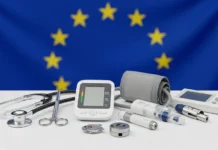According to survey results1 published on April 1st and even prior to that by the US Centers for Disease Control and Prevention, mental health concerns amongst high school students in the United States were intensified by the COVID-19 pandemic. Throughout the last decade, there has been a considerable increase in high school students expressing persistent feelings of despair or hopelessness, and also thinking or trying suicide, and findings from the latest CDC survey imply that youth mental health was considerably worse during the pandemic.
According to the CDC survey, more than a third (37%) of high school students across the United States had poor mental health at least almost all of the time during the COVID-19 pandemic. More than two-fifths of students (44%) reported feeling chronic despair or hopelessness, which led them to abandon some of their customary activities. One out of every five students has strongly contemplated suicide, and one out of every ten students has tried it.
As per the survey, poor mental health was quite common amongst lesbian, homosexual, and bisexual teens, as well as female high school students. At a media event, Kathleen Ethier, head of the CDC’s department of adolescent and school health, stated that youth are in crisis.
This and other data indicate that during the pandemic, youth and their families were under a tremendous amount of stress. The data reveals faults and adds to the understanding of the severe disruptions that some young people experienced as a result of the pandemic. According to the CDC poll, students who indicated they felt close to their classmates or felt virtually connected were considerably less likely to report poor mental illness during the outbreak.
Students who identified as gay, lesbian, or bisexual have been less prone than heterosexual students to feeling a connection with others at school. More than a third of high school students said they had experienced prejudice before or during the pandemic, with almost two-thirds of Asian students and much more than half of black students expressing it. Those who reported having been treated unfairly or badly at school due to their ethnicity or race were also much less likely to feel linked to their peers and were more likely to have poor mental health and difficulties focusing, recalling, or making choices.
The CDC designated racism as a severe public health problem last year. COVID-19 has had a disproportionate impact on communities of colour, as per a statement2 by CDC Director Dr. Rochelle Walensky, however wider structural injustices throughout decades have resulted in significant racial and ethnic health inequalities that are serious, far-reaching, and unacceptable.
Around two-thirds of pupils claimed it had been more difficult to do their schoolwork since the outbreak began. More than half of pupils said a parent or other adult in their home had abused them emotionally, and a quarter said they were hungry. Both of these events were tied to difficulties in accomplishing schoolwork. CDC’s National Center for HIV, Viral Hepatitis, STD, & TB Prevention, Director, Dr. Jonathan Mermin, said that mental health issues in youth are often connected with other behavioural risks such as narcotic use, experiencing violence, and greater risk sexual behaviors. And these issues can have long-term consequences well into adulthood.
In the first half of 2021, approximately a third of high school students indicated they had been using tobacco, alcohol, marijuana, or misused prescription opioids, and nearly one in three said they had been using these things more during the pandemic than previously. Mermin said one must do everything to assist academic institutions with their good policies as schools play such a vital safeguarding role in the lives of young people.
A representative sample group of over 8,000 high school students was surveyed by the CDC between January and June 2021. The COVID-19 Response Team at the CDC worked with specialists from the agency’s Division of Adolescent and School Health to adjust the Youth Risk Behavior Survey, which was developed with funds through the Coronavirus Aid, Relief, & Economic Security (CARES) Act.
References:
1 – https://www.cdc.gov/mmwr/ind2022_su.html
2 – https://www.cdc.gov/media/releases/2021/s0408-racism-health.html


















